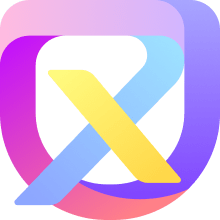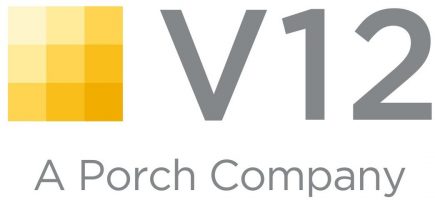Discover’s recent refocus on compliance, security, and risk management has sparked a collective effort within the Design and UX community at Discover to underscore the significance of these considerations in our design processes. But how do these aspects specifically weave into our work?
Firstly, let’s distinguish between the different types of Design and their integration with our focus on compliance, security, and risk management. Before delving into the specifics, it’s vital to grasp the distinct roles of designers at any company. Our digital space is home to various designers specializing in one of three design categories.
Designers fall into two primary groups: Print Design and Digital Design. Print Design specialists create assets tailored for marketing materials such as brochures, posters, and other physical collateral. This group ensures that visual elements align with a company’s brand identity and comply with standards.
Conversely, Digital Design specialists are responsible for crafting digital user interfaces, systems, and applications, covering software, SaaS, websites, mobile apps, responsive apps, and hybrid apps. Given the dynamic nature of digital platforms, considerations for compliance, security, and risk management become paramount.
It’s crucial to clarify that these discussions do not encompass Design Thinking, a problem-solving approach utilizing design methodologies. Design Thinking serves various functions in product management, operations, leadership, and engineering, employing tools like whiteboarding, storyboarding, journey mapping, and more. In this context, we focus on Design in the visual sense and the role designers play in the workplace.
Did you know that adherence to Business Technology (BT) standards, policy, risk management, and compliance is vital in Design at any company?
Within and outside the design community, there’s a consensus that neglecting risk management in creating digital assets and designs poses significant threats. It’s not just about following standards; it’s also about comprehending the implications of our designs in the broader context of security and compliance. In the realm of Design, our mission extends beyond creating aesthetically pleasing and functional products; we strive to ensure these creations align with organizational standards and the evolving landscape of digital security and compliance.
Before I delve into our role in the design domain, let me set the tone with a personal story. One of my initial job experiences was at a local newspaper, where I began as a junior designer, deeply engrossed in Graphic Design. Hired initially as a developer, I transitioned into Design, focusing on creating ads processed through Quark, a precursor and once a rival of Adobe InDesign—the leading application of its time.
Every digital ad I submitted underwent a meticulous process. If successful, the ad would be automatically formatted for print in the newspaper layout and converted into an image for website publishing—a revolutionary concept.
One particular assignment remains in my memory: designing an ad for a trendy chain of eyewear/optometrist stores. It was a significant task for a junior designer like me. Armed with a folder filled with handwritten notes, I delved into Photoshop, edited a compelling photo, gathered assets, and assembled a collage for the ad—an enticing buy-one-get-one-free offer for eyeglasses. Excitedly, I submitted it through Quark for approval.The rigorous editorial controls kicked in, with the ad passing through multiple layers of scrutiny. First, my department editor, the salesperson, the clients, and the print editor, and then a final revision by the print techs. However, despite all the safeguards, a critical error slipped through. The published ad mistakenly offered “Buy one, get one free on sunglasses” instead of “eyeglasses.”
This seemingly minor mistake had significant consequences. The business suffered a loss of over $20,000 in revenue due to our oversight. Although the paper compensated them with free advertising, the impact was substantial. The local and very popular optometrist had to honor the mistaken ad, giving away more expensive prescription-strength, brand-name, and tinted sunglasses to anyone who asked.
This incident was not just a financial blow; it became one of the lowest points in my career. Despite meticulous controls in place, from written requirements to multiple editors reviewing the work, a single word in an ad costs thousands.
Reflecting on this experience underscores the critical role of controls in the design domain. These measures are essential in preventing financial losses and safeguarding a company’s public image and reputation. Controls become indispensable because the absence of proper checks within the design space can lead to outcomes more severe than financial losses—potentially resulting in PR disasters due to misrepresenting images or language, with far-reaching consequences.
Communication is crucial in marketing and creative spaces. A simple mistake, like using the wrong image, can lead to a PR crisis costing millions. Many companies have faced such problems because of a designer’s error. For instance, remember Gap’s logo change 2009 and the Balenciaga ad? These are examples of how small mistakes by a designer can turn into significant controversies. Even seemingly small things like product disclaimers matter, as seen in the McDonald’s hot coffee lawsuit, which shows the need for clear communication in Design.
For example, at Discover, designers, web designers, and UX professionals play a crucial role in shaping and maintaining the company’s public image. Any deviation from the intended image can result in significant financial and reputational damage. Just as a security mistake in engineering can put people’s identities at risk, a lapse in design standards and compliance can cause serious problems.
Our responsibility for security and compliance involves paying careful attention to every design detail. This means using legally approved fonts and stock images while adhering to established design systems. It’s essential to ensure that all design tools and resources are pre-approved and that any digital assets used undergo thorough vetting. This diligence is vital to avoid legal issues and ensure that ideas or statements in the designs align with our company’s goals and values.
The stakes are high, and even seemingly simple actions, such as sharing designs on LinkedIn or participating in competitions, require approval from the communications team. This level of scrutiny guarantees that all resources used in the Design—whether for marketing, UI, or digital product assets—are legally obtained and paid for. These controls safeguard against accusations of asset theft or misuse, preventing any misrepresentation of your company’s values and objectives to the public. In essence, these controls are not just procedures; they are fundamental to maintaining the integrity and perception of the company in the public eye.
So, when you’re online looking for ideas or grabbing an image, remember the Eyeglass World lesson – the difference between ‘eyeglasses’ and ‘sunglasses.’ A single icon or image can be a risk for both you and the company you work for. Please take a moment to think about it before using anything. Talk to our communications and creative team to ensure it fits. Being sure about what you use is essential. You can create it yourself or get it from approved resources, like those in your company’s resource portal, most of which are available through sites like your company’s Sharepoint or ServiceNow.
Also, I encourage you to join your company’s security/technology/standards guild or team. You can help set standards, policies, and controls. Your involvement will help build a digital hub with all these rules and resources. This will make things easier for new designers, giving them a one-stop solution for all their design needs. It’s an exciting step for our future, and I’d love for you to participate.
If you have questions or ideas, reach out to the communications team. Your participation isn’t just helping protect your company; it’s a big part of your role as a designer and a member of the design community. By following our practices and standards, you’re ensuring we all stay safe and that your team continues succeeding. Let’s team up to keep our design practices strong and maintain your company’s values and reputation.





